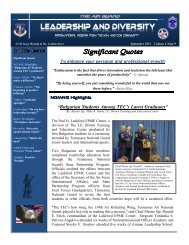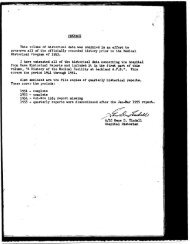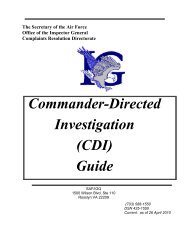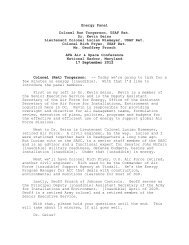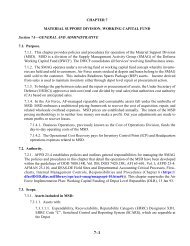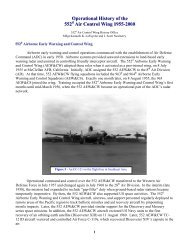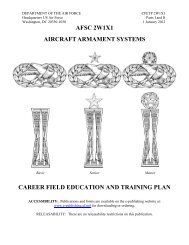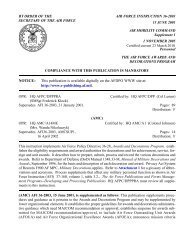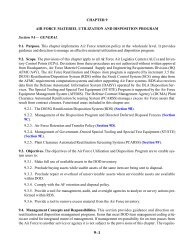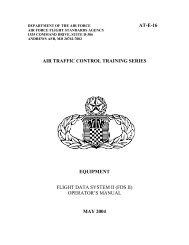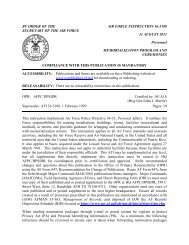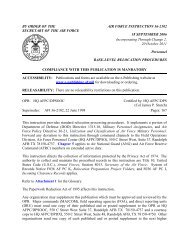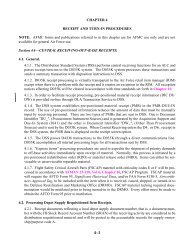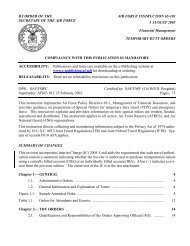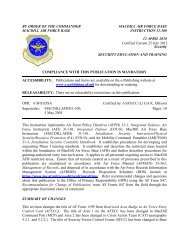CONTRAILS FACTS - Air Force Link
CONTRAILS FACTS - Air Force Link
CONTRAILS FACTS - Air Force Link
- TAGS
- contrails
- link
- www.af.mil
Create successful ePaper yourself
Turn your PDF publications into a flip-book with our unique Google optimized e-Paper software.
For a contrail to form, suitable<br />
conditions must occur immediately<br />
behind a jet engine in the expanding<br />
engine exhaust plume. A contrail will<br />
form if, as the exhaust gases cool<br />
and mix with surrounding air, the<br />
humidity becomes high enough (or,<br />
equivalently, the air temperature<br />
becomes low enough) for liquid<br />
water to condense on particles and<br />
form liquid droplets. If the local air is<br />
cold enough, these newly formed<br />
droplets then freeze and form ice<br />
particles that make up a contrail.<br />
Because the basic processes are<br />
very well understood, contrail formation for a given aircraft flight can be accurately predicted if<br />
atmospheric temperature and humidity conditions are known.<br />
After the initial formation of ice, a<br />
contrail evolves in one of two ways.<br />
If the humidity is low, the contrail will<br />
be short-lived. Newly formed ice<br />
particles will quickly evaporate. The<br />
resulting contrail will extend only a<br />
short distance behind the aircraft. If<br />
the humidity is high, the contrail will<br />
be persistent. Newly formed ice<br />
particles will continue to grow in size<br />
by taking water from the surrounding<br />
atmosphere. The resulting lineshaped<br />
contrail extends for large<br />
distances behind an aircraft.<br />
Persistent contrails can last for<br />
hours while growing to several<br />
kilometers in width and 200 to 400<br />
meters in height. Contrails spread<br />
because of air turbulence created by<br />
the passage of aircraft, differences<br />
in wind speed along the flight track,<br />
and possibly through effects of solar<br />
heating.<br />
Thus, the surrounding atmosphere’s<br />
conditions determine to a large<br />
extent whether or not a contrail will<br />
form after an aircraft’s passage, and<br />
how it evolves. Other factors that<br />
influence contrail formation include<br />
engine fuel efficiency, which affects<br />
the amount of heat and water<br />
emitted in the exhaust plume.



